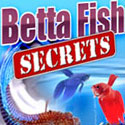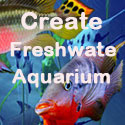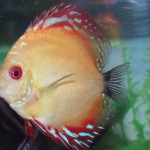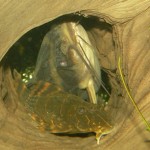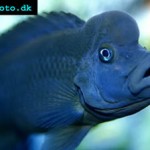Below are some water filtration and waste material terms commonly used in the aquarium world, which budding fish hobbyists may find useful.
Water Filtration Systems
Filters are devices used to remove unwanted particles or compounds from aquarium water. They come in a variety of designs, but most fall into three main categories biological, chemical, or mechanical as I’ve written a couple of posts (The Various Types Of Aquarium Filter And Their Functions and What Types of Aquarium Filter is Best for my Tank?) on them in elaborate explanation. That said, there are more to it then meets the eye.
Mechanical Filtration: A water filtration method that uses a filtering medium to remove particles from the water. Canister filters and undergravel filters are examples of mechanical filters.
Biological Filtration: A method of natural filtration that uses bacteria to break down waste substances by means of the nitrogen cycle. These include undergravel filters, trickle filters and sponge filters.
Chemical Filtration: The use of chemical processes to clean the water. Examples of this include activated carbon and protein skimmers.
Sponge Filter: This filter provides both mechanical and biological filtration. As water passes through the sponge, particles are removed. Bacteria growing on the surface of the sponge also remove toxic substances from the water.
Undergravel Filter: This system provides both mechanical and biological filtration. It consists of a plate placed underneath the gravel. Water is pulled down through the gravel where it is filtered and carried back up into the aquarium.
Canister Filter: This consists of an external canister that contains various mechanical filtration media. Water is pumped out of the tank, forces through the canister and then returned to the tank.
Protein Skimmer: An external filtering device that uses bubbles to remove nitrogen-rich proteins, fatty acids, and other organic wastes. A required piece of equipment for maintaining good water quality in a reef tank.
Filter Medium: Any substance used in water filtration systems to remove organic wastes and impurities from the water.
Activated Carbon: A form of carbon specially formulated for filtration. Carbon is good for removing a large number of toxins and other unwanted substances from aquarium water. It is especially useful for clearing or “polishing” cloudy water. One problem with carbon is that it can release phosphate into the water, and this stimulates algae growth.
Waste Material
Detritus: Waste material that accumulates in piles in the aquarium. Detritus is high in nutrients and should be removed whenever possible to help prevent unwanted algae growth.
Ammonia: Ammonia or NH3 is a toxic substance that builds up in aquariums. It is released by fish through their gills and as a result of the buildup of waste discharge. Ammonia is the first step in the nitrogen cycle. It can be removed by bacterial action where it is transformed into nitrite or by mechanical filtration.
The Nitrogen Cycle: The nitrogen cycle describes how waste products are broken down by bacteria in the aquarium. Animal waste breaks down by bacteria in the aquarium. Animal waste breaks down into toxic ammonia (NH3). The ammonia is then oxidized by nitrosomonas bacteria into nitrite (NO2), another highly toxic substance. Another bacteria called nitrobacter oxidizes the nitrite into nitrate (NO2), a much less toxic substance. Some systems are capable of taking the process one step further, by using anaerobic bacteria to convert the nitrate into harmless nitrogen gas.
Nitrification: The process by which bacteria converts ammonia into nitrite, and then nitrite into nitrate. This is the basis of the nitrogen cycle.
Nitrite: Nitrite or NO2 is the second product in the nitrogen cycle. Nitrite is a highly toxic substance that is produced by the oxidation of ammonia by nitrosomonas bacteria. It is easily removed with biological filtration.
Nitrate: NO3 is the final product in the nitrogen cycle. It is not toxic, but can be dangerous at high levels. Nitrate is created by the oxidation of nitrite by nitrobacter bacteria. In a reef tank, nitrate levels should be kept below 10ppm.



